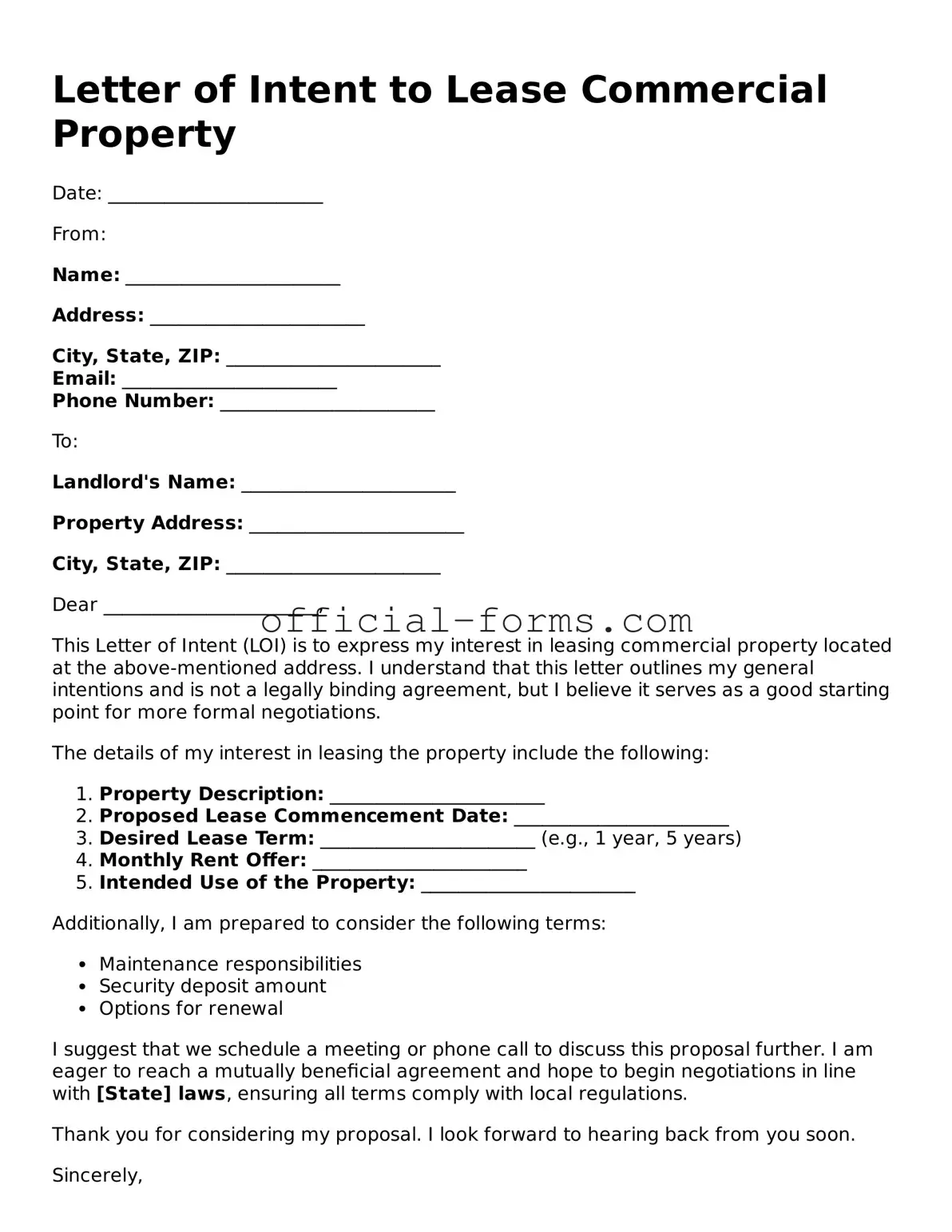Attorney-Verified Letter of Intent to Lease Commercial Property Template
The Letter of Intent to Lease Commercial Property is a preliminary document that outlines the basic terms and conditions of a potential lease agreement between a landlord and a tenant. This form serves as a starting point for negotiations, helping both parties clarify their intentions before drafting a formal lease. Understanding this document is crucial for anyone looking to lease commercial space effectively.
Open My Letter of Intent to Lease Commercial Property Now
